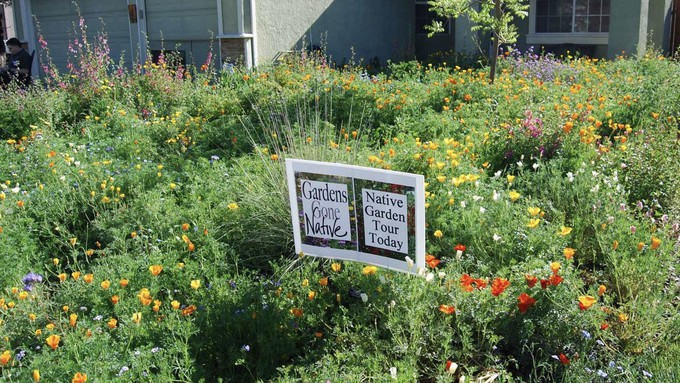
Sacramento Valley CNPS event spotlights wildlife-friendly landscapes

This colorful garden was part of a previous Gardens Gone Native tour. This year, 30 gardens from Woodland to Rocklin are on the tour Saturday. Photo courtesy SacValley CNPS
This garden tour covers a lot of ground – and inspiration. This Saturday, April 27, visitors can see 30 local wildlife-friendly landscapes that spotlight California native plants.
Hosted by the Sacramento Valley Chapter of the California Native Plant Society, the “Gardens Gone Native” tour stretches throughout the greater Sacramento area. The tour is free, but registration is required to get the addresses, tour brochure and map.
Each of the gardens is at least 50% native plants. Some are well-established; others are relatively new. Every garden does something for local wildlife as well as the people who care for these plants. Many of these native-centric gardens are distinctly Sacramentan.
Since it's a self-guided tour, see as many or as few gardens as you like.
“The Gardens Gone Native tour is a free garden tour featuring 30 California native plant home and school gardens in the Sacramento region,” says SacValley CNPS. “Gardens are comprised predominantly of California native plants in the urban landscape.
“These gardens feature a variety of ways in which native plants can flourish in the home garden,” add the organizers. “Some are professionally designed while others are more functional and are a mix use of natives, food production, and living spaces. You will find delightful and sustainable gardens that harness water, create habitats, and add a sense of place.”
Don’t just drive by; get out and see these gardens up close – and ask questions. This is an opportunity to really learn about natives from gardeners with personal experience. How did they grow their gardens? What’s their secret to native success? What wouldn't they plant again?
“Attendees will have the opportunity to ask garden hosts about their choices and challenges," say the organizers.
Tour hours are 9:30 a.m. to 4 p.m. Saturday. See virtual tours of past “Gardens Gone Native” as well as register at https://www.sacvalleycnps.org/gardens-gone-native-tour/.
Comments
0 comments have been posted.Sacramento Digs Gardening to your inbox.
Sites We Like
Garden Checklist for week of July 21
Your garden needs you!
* Keep your vegetable garden watered, mulched and weeded. Water before 8 a.m. to reduce the chance of fungal infection and to conserve moisture.
* Feed vegetable plants bone meal, rock phosphate or other fertilizers high in phosphate to stimulate more blooms and fruiting. (But wait until daily high temperatures drop out of the 100s.)
* Don’t let tomatoes wilt or dry out completely. Give tomatoes a deep watering two to three times a week.
* Harvest vegetables promptly to encourage plants to produce more. Squash especially tends to grow rapidly in hot weather. Keep an eye on zucchini.
* Pinch back chrysanthemums for bushy plants and more flowers in September.
* Remove spent flowers from roses, daylilies and other bloomers as they finish flowering.
* Pinch off blooms from basil so the plant will grow more leaves.
* Cut back lavender after flowering to promote a second bloom.
* It's not too late to add a splash of color. Plant petunias, snapdragons, zinnias and marigolds.
* From seed, plant corn, pumpkins, radishes, winter squash and sunflowers.